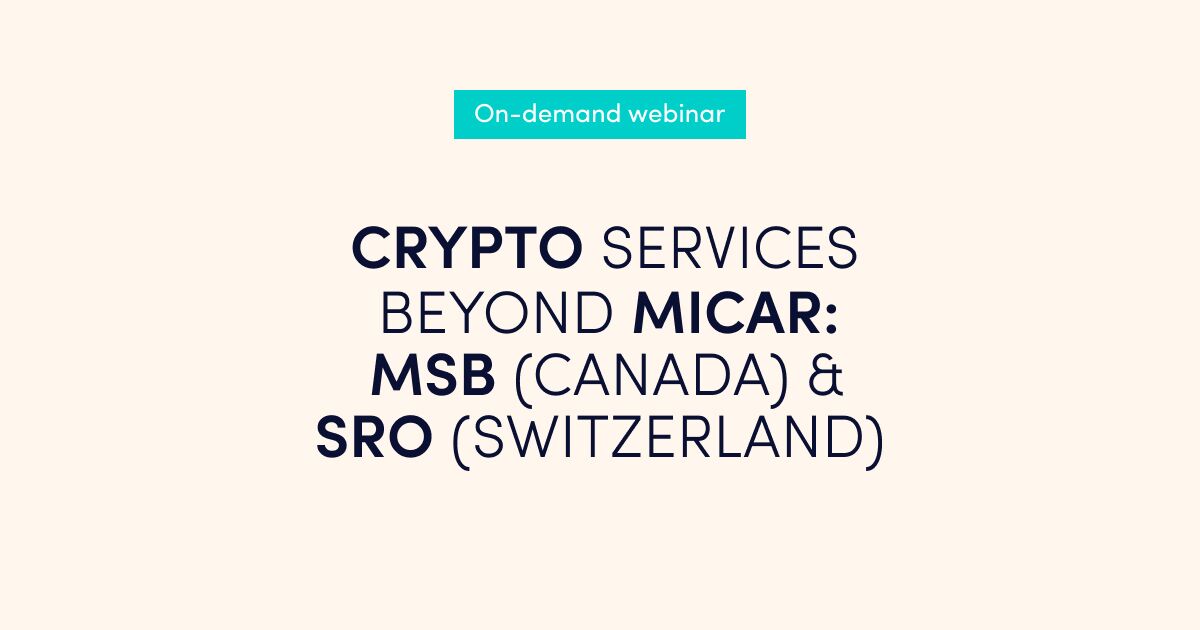Launching a fintech startup requires careful planning and strategic decision-making. Here are key recommendations from industry expert Ivan Aleksandrov, Chief Strategy Officer at Advapay, to guide you through the process.
1. Building the Roadmap and Organizational Structure
Before getting started, it’s important to emphasise that your fintech’s roadmap and organisational structure are guided by your target client base and the services you intend to offer—or intentionally exclude. These decisions will shape your choice of jurisdiction, fund flow design, and partner selection. So, let’s get started
2. Licensing Considerations
Client Base and Advertising
The choice of licensing jurisdiction is heavily influenced by how you plan to attract end customers. If you intend to use broad advertising channels, you must obtain a license in your customers’ jurisdiction. For example, if your clients are based in the European Union, you must secure authorisation as a payment institution (PI) or electronic money institution (EMI) from one of the EEA regulators. Alternatively, you can operate under an agency arrangement with a licensed entity that offers BaaS or embedded finance services.
However, if you expect clients to reach you organically—through events, partnerships, word-of-mouth, web searches, or other channels that adhere to the principle of reverse solicitation, and you do not actively seek customers in specific jurisdictions—you may have greater flexibility in selecting a jurisdiction. In this case, other factors can guide your decision.
This approach aligns with international regulatory practices. In most cases, you can onboard clients from other jurisdictions if they find your services without targeted marketing efforts. Provided they reached out independently, regulators in these clients’ countries are generally less likely to make claims against your operations, as this follows the reverse solicitation principle.
Prestige of the Jurisdiction and Banking Relationships
If you plan to advertise widely and openly—using channels like Google Ads and targeting specific countries—you must obtain a license in each relevant jurisdiction. However, if you rely on reverse solicitation, other factors, such as the prestige of the jurisdiction, take precedence when selecting a location for licensing.
Jurisdiction prestige is particularly crucial when establishing segregated bank accounts to hold and manage clients’ funds. Typically, more prestigious jurisdictions present greater challenges in obtaining a license, which can add credibility.
For example, European jurisdictions are generally regarded as more reputable than Canada. Although Canada has a strong business reputation, banks recognise that obtaining a Money Services Business (MSB) registration in Canada is considerably easier than securing authorisation in the EU. Factors like a country’s global standing, judicial maturity, low corruption levels, exclusion from FATF grey lists, and lack of involvement in money laundering scandals also contribute to its credibility. Thus, payment licenses from offshore zones may have lower credibility and can create difficulties in establishing banking relationships.
If you plan to use European banking infrastructure, securing a license in a country with a developed regulatory framework and strong reputation is essential.
Requirements for Personnel
Jurisdictions vary in terms of the required number of employees, their roles, and local presence at the time of license application and at the start of operations. For example, in the UK and EU countries, holding a license typically requires a minimum of 5-10 employees, most or all being local residents with relevant experience. Jurisdictions like Canada or New Zealand may have lower personnel requirements. In contrast, countries like Australia and Bahrain offer a more balanced approach, requiring a reasonable number of employees for the specific business model along with a suitable level of local presence.
Cost of Obtaining a License and its Maintenance
When selecting the right jurisdiction for your fintech company, it’s essential to consider the costs of obtaining and maintaining a license. The initial expenses can vary significantly depending on the jurisdiction and include fees for legal support, consultants, necessary personnel, and software. Additionally, ongoing maintenance costs—such as regulatory reporting, compliance, and personnel management—should also be factored into your decision.
Likelihood and Timeframe of Approval
A primary consideration when applying for a license is the expected timeframe for approval. This timeline varies by country; some jurisdictions have lengthy processes that could delay your launch. For instance, obtaining a license in the Netherlands may take up to 12 months after submitting all required documents—relatively quick compared to other EU countries, where it may sometimes take two or even three years.
In contrast, registering an MSB company in Canada is often faster, typically taking just three months (although this ease of registration can result in lower prestige with banks).
Therefore, it’s wise to confirm current timelines in the target country before applying. Relying less on official estimates and more on feedback from market players, practising lawyers, and consultants can provide more accurate insights.
The likelihood of approval is another crucial factor. In some countries, meeting stringent formal requirements generally results in a license or registration. However, in regions like the EU and the UK, fulfilling formal conditions alone may not guarantee approval. Regulators in these areas assess not only a company’s compliance with requirements but also their perception of its potential value in the market. If a company does not present a convincing case, it may face a high risk of refusal. Therefore, it’s important to recognise that the likelihood of rejection can be substantial in these regions.
3. Understanding the Flow of Funds
Payments Flow
Designing and organising the flow of funds is fundamental to your business’s success. The structure of this flow affects your financial model and influences your choice of partners.
In the payments sector, business challenges can often be addressed in multiple ways, each with varying costs, speeds, and complexities. For example, there are several approaches to organising international money transfers:
- Traditional SWIFT transfers
- Opening correspondent accounts in both the sending and receiving countries and holding cash balances in the receiving country for instant payouts
- Using crypto for remittances as an intermediate store of value
- Netting (matching) counter flows of money — from country A to country B, and from B to A
- Leveraging third-party payment rails.
No single method works universally across all corridors and currency pairs. Depending on client types and the specific sending and receiving countries, you’ll often need a combination of these methods or choose the most suitable channel based on current conditions.
This means thorough planning of the flow of funds is essential. You need to identify your clients, define the required payment types, and specify the countries involved in these payments. This careful planning will help you optimize the flow of funds and select the most effective options for your business needs.
4. Partner Selection
Main Principles
No fintech operates in isolation; it’s naturally integrated into the broader payment ecosystem, making the selection of banking and payment partners essential. Your choice of partners will be shaped by your flow of funds and the license you hold. At the same time, selecting the right partners is critical to your business’s success.
Above all, never rely on a single partner, no matter how ideal they may seem. Business approaches or compliance policies can change, and rates may increase unexpectedly. You need multiple backup partners ready to activate to avoid being left stranded. Diversifying banking partnerships is essential to mitigate risks associated with regulatory shifts or pricing fluctuations.
It’s also crucial to find partners who can not only support your business but also process payments for your specific client base, including handling transactions from the countries your clients are paying from and into. We recommend maintaining open and transparent communication with potential partners to confirm their compatibility with your clients’ needs. Providing examples of potential clients and sample transactions can help pre-empt future complications.
Tariffs
When selecting banking partners, understanding tariffs and fees is essential. In developing a financial model, it’s important to recognize that there are no standard tariffs—rates can vary significantly depending on the circumstances. When working with partners to open accounts, remember that tariffs for new companies often differ from those for established businesses.
Banks evaluate the risks and potential profitability of working with startups. If your company operates in a high-risk industry or lacks substantial transaction volume, you may face higher initial costs, stricter compliance controls, and potentially limited-service options.
It’s essential to strike a balance: don’t be discouraged if you don’t receive your desired rate initially, and be proactive in discussing opportunities for rate improvements once certain transaction volumes are reached.
5. Key Considerations for Planning
There are several key principles of business planning that will enable you to assess budget and resources accurately and avoid mistakes.
Step-by-step Development
The fintech market is highly competitive, and success depends on gradual, progressive development. You can’t expect to secure favourable rates and services right away based solely on having a unique concept. Prepare for a step-by-step growth process.
For instance, if a client in the crypto industry needs dollar transactions and individual IBANs for their customers, it’s important to recognize the complexity of this requirement. The company should realistically understand that obtaining these services from the start is challenging.
Diversification
Diversification is critical. If possible, obtain licenses in multiple jurisdictions and seek agency status with a reputable licensed company. For banking partnerships, diversification is not optional—having multiple partners is a critical necessity.
Maintaining multiple options protects your business against unexpected changes. Concentrating all resources with a single partner puts your services and business continuity at risk.
Thorough planning of the flow of funds
Careful planning of the flow of funds is essential. This involves selecting the right partners, identifying the timing of payments to these partners, and assessing the associated costs. Additionally, it’s important to evaluate whether your strategy aligns with current market conditions.
6. Budgeting
Operating expenses
Budgeting is essential for managing payment service costs and expenses related to IT infrastructure, AML compliance, and necessary personnel. Remember that compliance costs and other operating expenses will increase as your business scales, so it’s important to factor this into your budget. Additionally, IT-related expenses—such as hosting, software development, and other technological needs—should be carefully planned for.
Customer Acquisition Costs
Many startups underestimate the costs associated with customer acquisition and the level of competition. This is especially relevant for low-risk companies targeting a broad audience and intending to reach customers through widespread marketing channels.
It’s crucial to understand that customer acquisition cost encompasses not only the average cost of initial registration but also the conversion rate to active users. Grasping these dynamics and accurately forecasting these costs is vital. Marketing channels can be expensive, so thorough market research is necessary to ensure realistic budgeting.
While companies focused on high-risk customers may have higher service prices that cover customer acquisition costs with a significant margin, fintechs targeting a wide audience must pay close attention to the ratio of earnings per customer-to-customer acquisition cost.
Conclusion
The fintech space has become increasingly competitive in recent years; however, there is still room for new players, business models, and products. While focusing on creating a great product that meets audience needs, along with creative marketing and an original concept, it’s essential not to overlook infrastructure, compliance, and business planning considerations.
By following our expert recommendations, you can effectively navigate the challenges of launching a fintech startup, laying a strong foundation for growth and sustainability. If you have any questions about your project, feel free to schedule a call with our expert.
Advapay at stake:
How can Advapay can assist you in launching your fintech business?
• Assistance in EMI/PI licencing in the EEA/UK
• Registration of MSB company in Canada
• Delivery of a comprehensive Core banking system encompassing back-office and white-label applications for end-users
• Assistance in payment infrastructure development
• BaaS-solutions in collaboration with our partners – EEA/UK licenced EMIs and PIs









